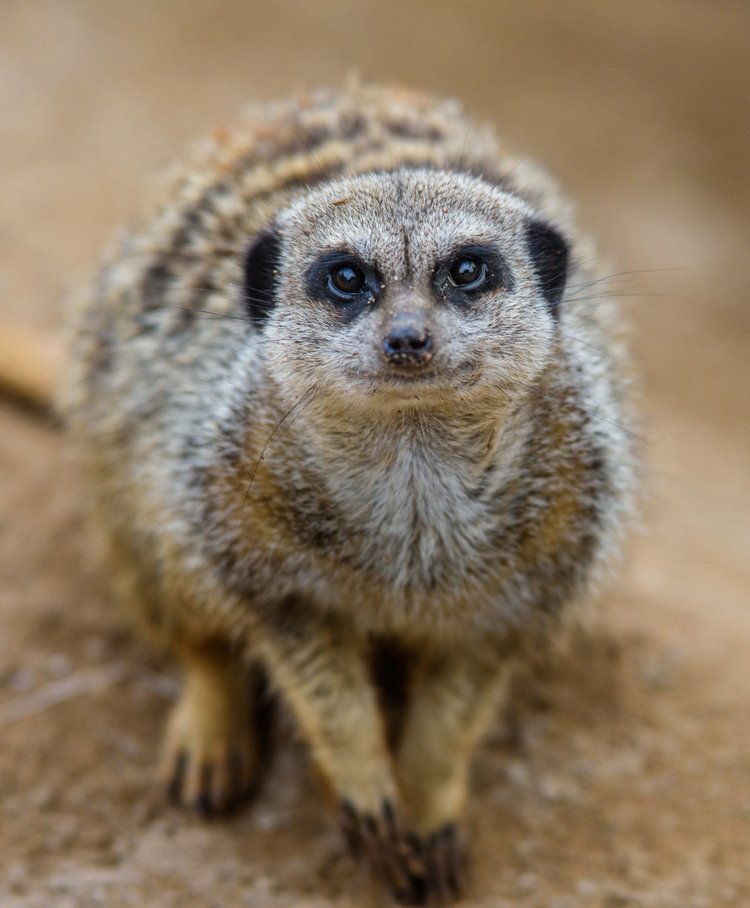
MEERKAT
Suricata suricatta
What the Meerkat lacks in size it makes up for in personality. Standing at just 29cm and weighing as little as 620 grams the Meerkat in a small mongoose with buckets of charisma! Very social by nature, the meerkat will live in groups of up to fifty individuals, usually comprising of a dominant pair. These groups act as expert diggers, making hundreds of tunnels, some as deep as 1.5 metres!
Breeding
Within each group, the dominant male and female are the ones who usually breed successfully, though sometimes subordinate females will have young, and subordinate males may leave the group to find females from other groups. Once pregnant, the females carry the young for a gestation period of 11 weeks, after which between two and five young are born underground. Once the young reach four weeks of age they will leave the safety of their burrow and venture above ground. These young will be taught how to catch food and will be fed by ‘helper’ meerkats in order to ensure their survival.
Threats in the wild
A successful and industrious little critter, its ability to work as part of a team and it’s endearing nature mean that the Meerkat has no real threats in the wild and is currently classified as a species of least concern by the IUCN Red List




